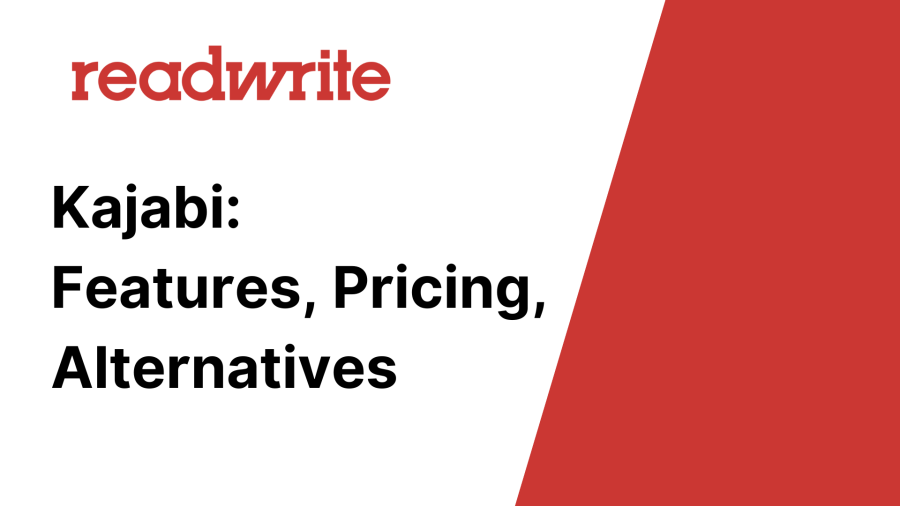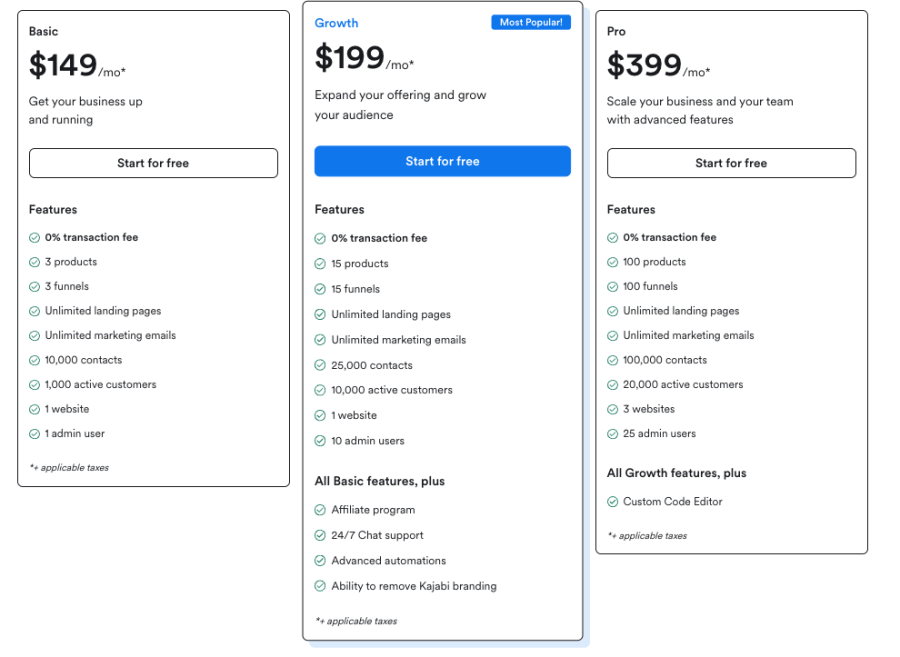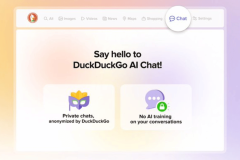Welcome to the “Ultimate Guide to Kajabi,” your one-stop resource for unlocking the full potential of this powerful all-in-one platform for online businesses. With the rise of e-commerce and digital entrepreneurship, Kajabi has quickly emerged as a top contender in the market, providing a comprehensive suite of tools designed to help businesses sell, market, and conduct their courses, memberships, and coaching programs with ease.
In this comprehensive guide, we will delve deep into the world of Kajabi, exploring its features, benefits, and customization options while also sharing valuable tips and insights on how to make the most of this incredible platform. Whether you are a new Kajabi user seeking foundational knowledge or a seasoned pro looking to optimize your online business, this ultimate guide is here to help you achieve success. So, buckle up and prepare to embark on a journey with us through the ins and outs of Kajabi, as we unveil the secrets to mastering this versatile platform and revolutionizing your online business. Let’s get started!
Featured Partner on Kajabi's website
|
What is the Kajabi
Kajabi is a comprehensive all-in-one platform that allows users to create, market, and sell online courses, memberships, and digital products. The platform offers features such as website building, blogging, email marketing, and automation tools, making it easy for creators to manage their online businesses. Kajabi is popular among entrepreneurs, experts, and influencers looking to monetize their skills and knowledge.
Main Takeaways
- Kajabi is an all-in-one platform that allows users to create, market, and sell online courses and membership sites.
- It offers a wide range of tools and features for building an effective online business, including website building, course creation, email marketing, analytics, and more.
- The platform has a user-friendly interface with responsive customer support, making it accessible to both beginners and experienced entrepreneurs alike.
You may want to use Kajabi to…
Kajabi is an all-in-one platform that allows users to create, market, and sell online courses, memberships, and other digital products. Here are some different example use-cases for Kajabi:
Online Course Creation: An instructor, subject matter expert, or coach creates and sells online courses to teach their skills or knowledge. They can leverage Kajabi’s course builder to create engaging multimedia lessons, quizzes, and downloadable resources.
Membership Site: A content creator establishes an exclusive membership site with premium content and resources that are not accessible to the general public. Members pay a monthly fee to access videos, articles, and interactive forums within the platform.
Webinars and Live Events: Businesses or individuals host live webinars or virtual events using Kajabi\’s built-in webinar tools. These events can be used to teach skills, offer training, or promote products and services, with the ability to monetize the event through ticket sales or upsells.
Digital Product Sales: An author or entrepreneur uses Kajabi to sell e-books, templates, guides, or other digital products. The platform\’s shopping cart and payment processing make it seamless for users to purchase the products.
Coaching and Consulting: Coaches and consultants can use Kajabi to launch and sell consulting services or coaching packages. They can schedule and manage appointment bookings, securely process payments and create personalized client portals.
Marketing and Sales Funnels: Businesses use Kajabi’s marketing tools to build targeted email campaigns, create landing pages, and design sales funnels that promote their products and services, driving leads and increasing conversions.
Community Building: Organizations can create and engage an online community using Kajabi’s website builder and social features. By enabling discussions, sharing resources, and hosting events or webinars, Kajabi fosters an environment for building loyal and engaged communities.
Corporate Training: Companies use Kajabi to create customized training programs for their employees. These can include courses on professional development, compliance requirements, or skill development, with progress tracking and assessments to ensure employees are engaged and learning effectively.In summary, Kajabi is a versatile platform that caters to various industries, allowing businesses and individuals to create, market, and sell digital products and services in an integrated online environment.
Featured Partner on Kajabi's website
|
Features of Kajabi
Kajabi is an all-in-one online course and membership site platform designed to help course creators, educators, and business owners to build, market, and sell their digital products. It offers a comprehensive solution for creating online courses and membership sites, as well as marketing and selling these digital products.
Some of the main features of Kajabi include:
Course and content creation: Kajabi provides a variety of tools for users to create and customize their courses or membership content. Course creators can easily upload and manage various types of content such as written, audio, and video files, and organize them into modules and lessons. The platform also supports quizzes, surveys, and assessments, helping to enhance the learning experience for users.
Website and landing page builder: Kajabi offers a range of customizable templates to build and design professional-looking websites and landing pages. The platform’s intuitive drag-and-drop website builder allows users to easily create and modify their online presence without any coding or design skills required. Features such as built-in blogging and SEO optimization further assist users in improving their brand visibility and reach.
Marketing tools and automation: Kajabi is equipped with a suite of advanced marketing tools, including email marketing, automations, and an integrated CRM. Users can design and execute highly targeted marketing campaigns, segmenting their audience based on behavior, preferences, or profile information. The platform’s marketing automations enable scheduling and triggering of various actions, such as sending emails, promoting offers, or enrolling students, based on specific user actions or events.
Sales and eCommerce: The platform simplifies the process of selling digital products through customizable pricing options, payment gateways, and checkout pages. Users can create different types of offers, such as one-time purchases, subscriptions, or payment plans. Kajabi also provides analytics and reporting to help course creators track their sales, revenue, and student progress.
Community and engagement tools: Kajabi enables users to build and nurture their online communities through features such as discussion boards, polls, and comment sections within the course portal. This encourages interaction and collaboration among students and helps to foster a sense of community and support.
Integrations: Kajabi offers integrations with various third-party platforms and tools, such as Google Analytics, Facebook Pixels, and various email marketing services. Users can also leverage the Kajabi API for custom integrations to extend the platform\’s functionality further.
Overall, Kajabi provides a comprehensive solution for course creators, offering tools and features that cover all aspects of building, marketing, selling, and managing online courses or membership sites. With its user-friendly interface and robust feature set, Kajabi simplifies the process of turning expertise into a thriving online education business.
Pros and Cons of Kajabi
Pros
Comprehensive platform: Kajabi offers a wide range of features and tools, including course creation, website building, email marketing, payment processing, and analytics. This eliminates the need for multiple separate software platforms, streamlining the process of launching and managing your online business.
User-friendly interface: Kajabi’s intuitive dashboard and interface make it easy for users of all skill levels to create and manage their digital products. This means you can focus on creating high-quality content for your customers without worrying about technical details.
Customizable templates: Kajabi provides an extensive library of customizable templates for course content, websites, landing pages, and emails. This allows users to create a unique and professional look and feel for their business without requiring extensive design skills.
Integrations: Kajabi integrates with numerous third-party tools and applications, such as Stripe, PayPal, Mailchimp, Zapier, and Google Analytics, making it easy to connect your existing tools and extend the platform’s functionality.
Customer support: Kajabi offers responsive and helpful customer support through live chat, email, and a comprehensive knowledge base. In addition, they provide a variety of tutorials, webinars, and video courses to help users make the most of the platform.
All-in-one pricing: With a single monthly or annual fee, Kajabi customers receive access to all the features and tools needed to run their online business. This can make it more cost-effective compared to cobbling together multiple solutions.
Cons:
Cost: Kajabi’s pricing plans can be a higher financial investment compared to other platforms, particularly for beginners or small businesses on a tight budget.
Limited customization options: While Kajabi does offer customizable templates, users might find their design capabilities limited compared to other platforms like WordPress. This can be a drawback for those who need more advanced design or coding options.
No native mobile app building: Kajabi does not currently offer the ability to build app-based courses or memberships, which some businesses may require for their strategies.
Limited assessment tools: While Kajabi supports quizzes and surveys, its assessment capabilities are limited compared to specialized learning management systems. This may not be ideal for users who require advanced assessment or accreditation features.
Restricted lower-tier plans: Some features, like access to the affiliate program and advanced automations, are only available on higher-tier pricing plans. This can limit the capabilities of users on the Basic or Growth plans.
In conclusion, Kajabi is a comprehensive all-in-one platform that is well suited for users looking for a simple, streamlined platform for creating and managing digital products. While it may not offer the advanced customization or assessment options found in some other platforms, its ease of use and strong customer support make it an attractive option for many businesses. However, its pricing plans may be a drawback for those with limited budgets.
How to setup the Kajabi
Kajabi is an all-in-one platform for creating, marketing, and selling online courses, membership sites, and other digital products. It offers numerous tools to help you create a successful online business.
Here’s a step-by-step guide to setting up Kajabi:
1. Sign up for Kajabi:
First, head over to kajabi.com and sign up for an account. They offer a free trial, so you can try out the platform without any commitment. Choose a plan that suits your needs and complete the registration process, including providing your email address, password, and billing information.
2. Customize your website:
After signing up, you’ll be directed to the Kajabi Dashboard. Begin by customizing your website. Go to the “Website” tab in the dashboard, and click on “Manage Themes” to start customizing your site’s appearance. Choose a theme that resonates with your brand, and customize the theme’s settings to your preferences such as colors, fonts, logos, and more.
3. Set up your domain:
To use a custom domain for your Kajabi website, go to the “Settings” tab in the dashboard, and click “Domain.” Follow the steps to either purchase a new domain through Kajabi or connect your existing domain to your Kajabi site.
4. Create your first product:
A “product” in Kajabi is your digital offering, such as an online course or a membership site. To create your first product, navigate to the “Products” tab in your dashboard, and click “New Product.” Choose a product template that matches your needs, and start building your content by adding sections, categories, and lessons.
5. Set up payment and pricing:
Once your product is created, you\’ll need to set up the pricing options and payment methods. Go to the “Offers” tab in the dashboard, and then click “New Offer.” Select the product(s) you’d like to include in the offer, set the pricing, and choose your preferred payment gateway (e.g., Stripe or PayPal). Provide any necessary information for the payment gateway, and click “Save.”
6. Create marketing tools:
Kajabi offers a variety of marketing tools, including sales funnels, email marketing, and landing pages. To start creating these elements, go to the “Marketing” tab on your dashboard and follow the prompts to build a landing page, set up email campaigns, or create a sales pipeline.
7. Set up automations:
Automations in Kajabi help save time and streamline your processes. To set up automations, go to the “Automations” tab in your dashboard, and click “New Automation.” Create a trigger event (e.g., a user purchases your product), then choose an action for Kajabi to take when the trigger occurs (e.g., grant access to the purchased product).
8. Launch your website:
Once you’ve completed the above steps, you’re ready to launch your Kajabi website. Navigate back to the “Website” section in your Kajabi dashboard, and click “Publish” to make your site live.Remember, Kajabi offers a wealth of resources and tutorials to help you succeed, so if you ever feel stuck or unsure about a step, don’t hesitate to explore their help center for more guidance. Happy creating!
Featured Partner on Kajabi's website
|
Main Alternatives to Kajabi
Teachable
Teachable is a popular all-in-one platform for creating, marketing, and selling online courses. Like Kajabi, Teachable also offers a wide range of features to help course creators design, market, and run their online courses. However, Teachable focuses more on ease-of-use, making it a great option for beginners who may not have as much technical expertise. Teachable’s pricing is also more competitive compared to Kajabi, making it a more affordable option for those starting in the online course industry. However, Kajabi offers more advanced marketing options and stronger community features, giving course creators more tools to market their courses and foster a community around their content.
See our comparison: Kajabi Versus Teachable
Thinkific
Thinkific is another all-in-one platform for creating and selling online courses that competes with Kajabi. Both platforms offer course creators an array of features for designing, marketing, and managing their courses. Thinkific stands out for its versatility in customizing course content, allowing creators to design unique and engaging learning experiences for their students. Additionally, Thinkific offers a free plan, making it more accessible for beginners or budget-conscious course creators. However, Kajabi has a more robust set of marketing features and integrations, giving it an edge for those looking to grow their course business through advanced marketing strategies.
See our comparison: Kajabi Versus Thinkific
LearnWorlds
LearnWorlds is a powerful online course platform that compares to Kajabi in terms of offering an end-to-end solution for creating, marketing, and selling courses. One key difference between the two platforms is that LearnWorlds focuses more heavily on the interactive and social learning aspects, offering features like built-in social networks, interactive video functionality, and advanced quiz tools. This focus on interactivity can lead to more engaged students and higher course completion rates. However, Kajabi has a more comprehensive marketing toolset and seamless third-party integrations, which give course creators more options when promoting their courses and expanding their reach.
See our comparison: Kajabi Versus Learnworlds
Pricing of the Kajabi
Kajabi is an all-in-one online platform that allows you to create, market, and sell your digital products, courses, and memberships.
Kajabi offers three main pricing plans: Basic, Growth, and Pro.
Basic Plan:
Priced at $149 per month (billed annually) or $199 per month (billed monthly), the Basic plan offers:
- Up to 3 products
- Up to 3 pipelines (marketing funnels)
- Unlimited landing pages
- Unlimited marketing emails
- 10,000 contacts
- 1,000 active members
- 1 website
- 1 admin user
- Kajabi branding on the website.
Growth Plan:
Priced at $199 per month (billed annually) or $299 per month (billed monthly), the Growth plan includes:
- Up to 15 products
- Up to 15 pipelines
- Unlimited landing pages
- Unlimited marketing emails
- 25,000 contacts
- 10,000 active members
- 1 website
- Up to 10 admin users
- No Kajabi branding
- Advanced automations and integrations.
Pro Plan:
Priced at $399 per month (billed annually) or $499 per month (billed monthly), the Pro plan offers:
- Up to 100 products
- Up to 100 pipelines
- Unlimited landing pages
- Unlimited marketing emails
- Up to 100,000 contacts
- 20,000 active members
- Up to 3 websites
- Up to 25 admin users
- No Kajabi branding
- Advanced automations and integrations
- Code editor for customizing the website.
Comparing with competitors:
Teachable: Teachable offers three pricing plans: Basic ($39/month), Professional ($119/month), and Business ($299/month). While Teachable may be more affordable, it lacks some of Kajabi’s advanced marketing features. Teachable focuses more on course creation and may require additional third-party tools for marketing and email automation.
Thinkific: Thinkific’s pricing plans include Free, Basic ($49/month), Pro ($99/month), and Premier ($499/month). While Thinkific\’s pricing appears more affordable, it also lacks some of Kajabi’s all-in-one functionality. Thinkific primarily focuses on online course creation and delivery, while Kajabi offers robust marketing features and sales funnel management.
Kartra: Kartra’s pricing plans range from Starter ($99/month), Silver ($199/month), Gold ($299/month), to Platinum ($499/month) with varying levels of features and scalability. While Kartra’s pricing is somewhat comparable to Kajabi, Kartra leans more heavily on its marketing automation capabilities.
In summary, Kajabi’s pricing may be relatively higher than some competitors, but it offers a comprehensive all-in-one marketing solution. While competitors like Teachable and Thinkific offer more affordable options for course building, they may require additional tools for marketing purposes. Kajabi’s platform is suitable for those looking for a complete solution to create, market, and sell digital products, courses, and memberships.
Featured Partner on Kajabi's website
|
Frequently Asked Questions
Q1: What is Kajabi?
A: Kajabi is an all-in-one online platform that allows you to create, market, and sell digital products and online courses. It provides a wide range of tools and features such as website building, course creation, email marketing, and analytics to help businesses grow and generate revenue.
Q2: How much does Kajabi cost?
A: Kajabi offers three pricing plans: Basic, Growth, and Pro. The Basic plan starts at $149 per month, the Growth plan at $199 per month, and the Pro plan at $399 per month. Each plan features different capabilities and limits depending on the needs of your business.
Q3: Can I try Kajabi for free?
A: Yes, Kajabi offers a 14-day free trial for new users. During this period, you can access all features and tools to test the platform and decide if it meets your business requirements.
Q4: Does Kajabi provide website hosting?
A: Yes, Kajabi offers secure and reliable website hosting as part of its platform. All the website\’s content, courses, and files are hosted on Kajabi\’s servers, eliminating the need for external hosting services.
Q5: Can I integrate Kajabi with other platforms?
A: Yes, Kajabi offers a variety of integration options with other popular services such as Zapier, Mailchimp, ClickFunnels, Google Analytics, and more. Additionally, Kajabi has a built-in integration with popular payment gateways like PayPal and Stripe.
Q6: What kind of customer support does Kajabi offer?
A: Kajabi provides customer support in various forms, including email support, a comprehensive Help Center with articles and tutorials, the Kajabi Community, and live chat support for users on the Growth and Pro plans.
Q7: Can I sell physical products on Kajabi?
A: Although Kajabi primarily focuses on digital products and online courses, you can also sell physical products by creating product offers in the platform. However, you\’ll need to handle product fulfillment and shipping externally.
Q8: Are there any transaction fees when selling on Kajabi?
A: Kajabi does not charge any transaction fees for any of its pricing plans. The only fees you’ll need to consider are the standard processing fees charged by your chosen payment gateway (e.g., PayPal or Stripe).
Q9: Is Kajabi mobile-friendly?
A: Yes, Kajabi’s website builder is designed to create responsive websites that automatically adjust to different screen sizes and devices. Additionally, Kajabi offers a mobile app that enables your customers to access and consume your content on the go.
Q10: Can I create a membership site using Kajabi?
A: Yes, Kajabi allows you to create membership sites where users can access exclusive content and courses based on their subscription level. You can set up recurring payments, create custom content for different membership levels, and manage member access with ease.
Conclusion
The Ultimate Guide to Kajabi has provided an in-depth look into the powerful platform that is Kajabi. We have explored its extensive features, including website creation, online courses, and membership site management, as well as its marketing tools and integrations that set it apart from other platforms in the market.
Aspiring entrepreneurs, educators, and content creators aiming to launch and scale their online business can leverage the guidance provided in this guide to maximize the potential of Kajabi. With its user-friendly interface, customizable templates, and a strong support ecosystem, Kajabi truly delivers a one-stop solution for creating, marketing, and selling digital products.
Implementing the tips and strategies outlined in this guide, users can build a thriving online business and significantly impact the lives of their audience. Make the most of this Ultimate Guide to Kajabi and embark on a successful and fulfilling journey in the world of online entrepreneurship.
Discover more Kajabi comparisons:
























